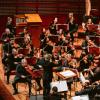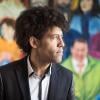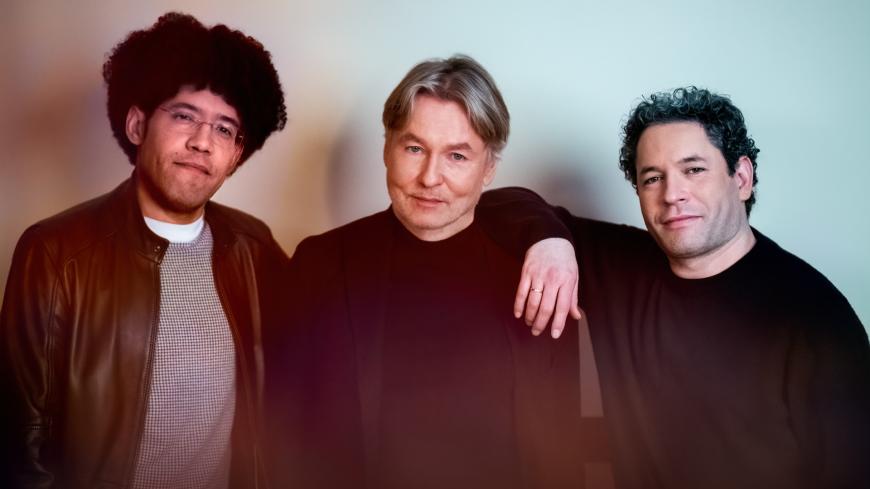
In a show of unity perhaps unprecedented in our time, the music directors of California’s three leading orchestras jointly announced the creation of the California Festival: A Celebration of New Music earlier this year. And now that it’s over — with no word yet as to whether there will be a second edition — SF Classical Voice wanted to compare and recap what Los Angeles’ Gustavo Dudamel, San Francisco’s Esa-Pekka Salonen, and San Diego’s Rafael Payare contributed to the festival.
In order to do that, your faithful correspondent got in the car and traveled up and down U.S. 101 and Interstates 5 and 405 over the span of less than a week (Nov. 12–17). It was fun, ultimately exhausting, and I got lucky. Each concert by these three orchestras was outstanding, adventurous, and stimulating in its own way.
This was a “festival” on a very loose leash, where any organization that wanted to sign on could, with only one condition — to present at least one piece written within the last five years. As it happened, each of the concerts I attended had at least one world premiere.
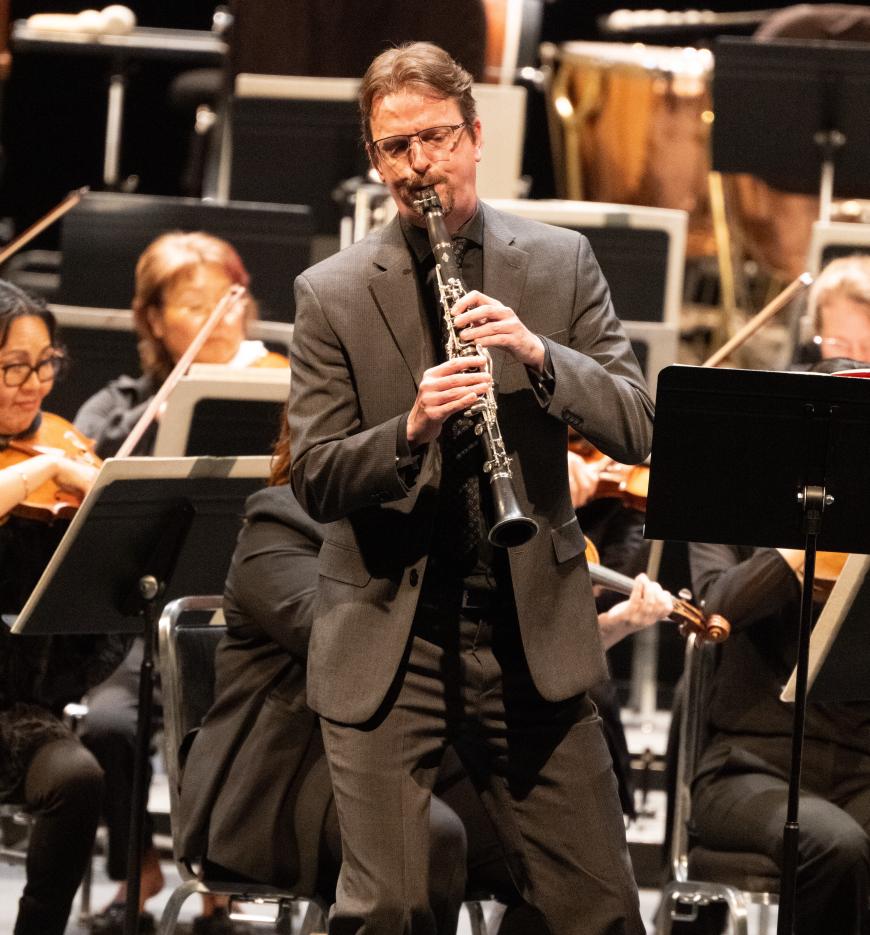
First on the agenda was a journey to Davies Symphony Hall to see the San Francisco Symphony on Sunday afternoon (Nov. 12). Salonen presented new pieces by two California-based composers who are immigrants to the state, along with a work by a major 20th-century emigre that was written in California.
The concert started with a piece by Salonen himself, a five-movement, half-hour suite for clarinet and strings called kínēma, a Greek word for “movement.” Translated into English, it means exactly what you would think — “cinema.”
Therein hangs a tale, which Salonen divulged to the audience in his dry, witty way. During the beginning of the pandemic, he was paralyzed creatively. “I spent my days glued to the TV. I couldn’t write music because it didn’t make sense.” Eventually, in 2021, he got an offer to score a Finnish romantic-triangle film, Odotus (The wait). “Forty percent of the film was sex scenes, and my training didn’t cover it,” he deadpanned. But he took the project on just to get something going and ended up recycling much of the material for this concert piece, as well as incorporating some additional ideas he got from a dream in which he was sharing a couple of beers with the medieval composer Pérotin.
The result is probably the most luscious, most consonant score that Salonen has written to date, with soaring, sighing melodies for the solo clarinet, even something resembling a folk dance in the third movement. There is some astringent anguish, particularly in the fourth section (an elegy for a departed friend, Salonen says), but always with an attractive palette of string colors, which resounded splendidly in Davies. SF Symphony principal clarinet Carey Bell produced a lovely liquid tone, with terrific control over sustained notes.
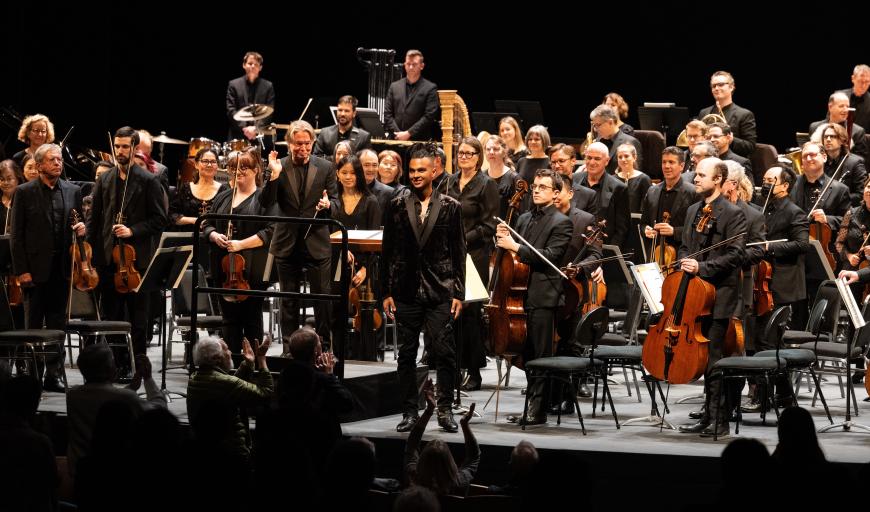
The 28-year-old Ghana-born, Bay Area-based composer Jens Ibsen heard the world premiere of his two-movement Drowned in Light, which seemed as if it would become a concerto for electric guitar and orchestra. After a deceptively subdued introduction, the guitar tromped on the fuzz-tone pedal, and things got rowdy in a stomping, heavy-metal manner, driven by a trap drummer and his kit.
The second part, “Nightswimming,” was somewhat gentler at first in an easy-listening way, until the orchestration and arhythmic guitar rose up again in cinematic glory. The SF Symphony is no stranger to heavy metal, having famously collaborated with Metallica in the band’s S&M shows — and with that in mind, one wasn’t surprised that the rock and symphonic elements were well balanced in the mix.
Finally, Salonen confirmed his standing as one of the best conductors of Igor Stravinsky on the planet with a vigorous, impressively polished performance of the Symphony in Three Movements, very much set in the composer’s craggy, irresistibly rhythmic style. Salonen had the orchestra in peak form this afternoon; the brass had bite, the balances were good all around, and everybody was playing as one.
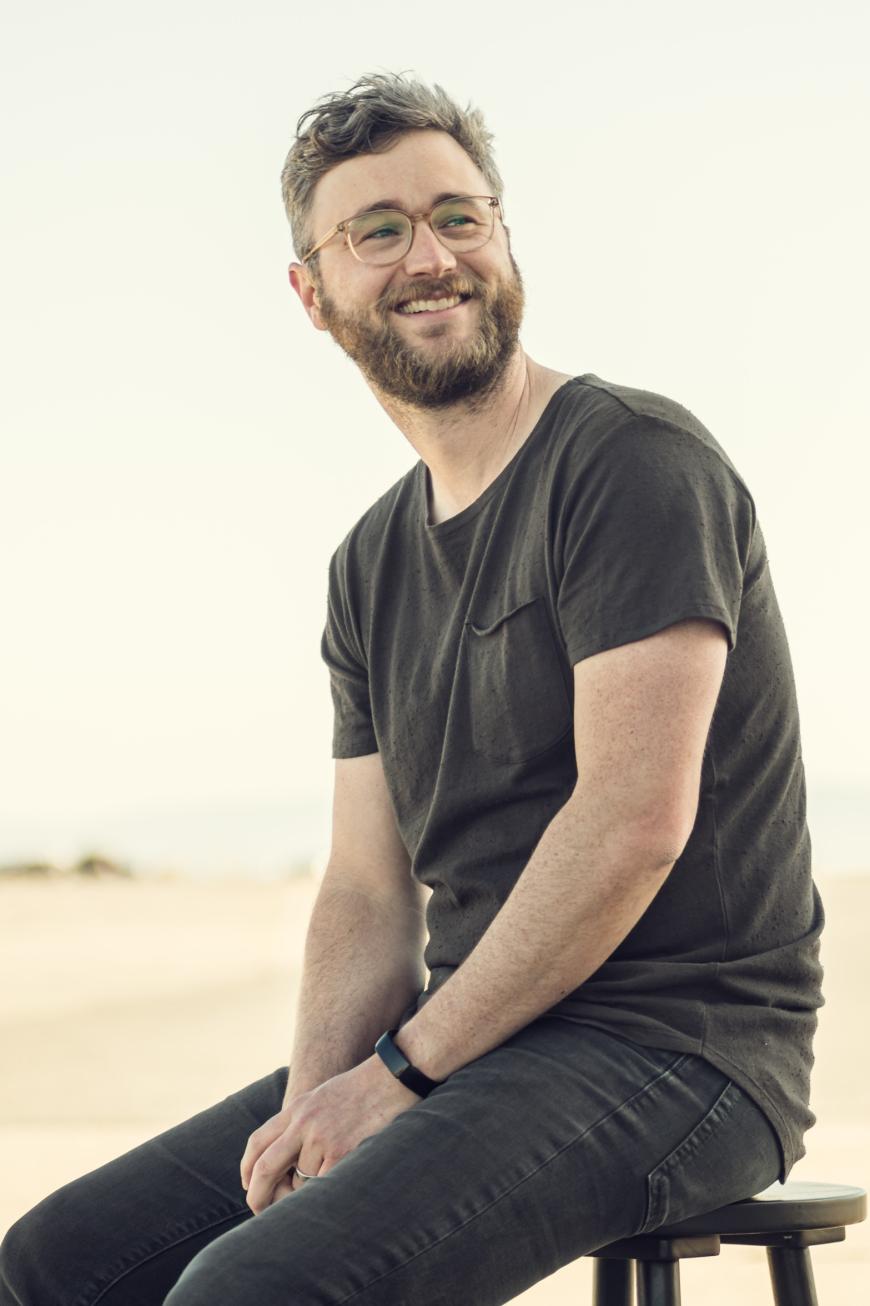
Down the coast, I stopped in Los Angeles for a Green Umbrella concert at Walt Disney Concert Hall on Tuesday night (Nov. 14), a collaboration between the LA Phil New Music Group and the Ojai Music Festival. Appropriately, given my wanderings, the program was called “Chaparral and Interstates: New Music From California” — the only concert of the bunch that made a specific point of limiting its repertoire to new music by living California composers.
M.A. Tiesenga’s Sketches of Chaparral was a world premiere whose fizzing fiddles and cellos and scratching percussion certainly evoked California chaparral in all its semiarid prickliness. Conductor Vimbayi Kaziboni hardly moved most of the time, suggesting an aleatoric aspect at work. This was environmental music, a cousin of John Luther Adams’s soundscapes, but it went on for too long.
Samuel Adams’s Eden Interstates, also a world premiere, addressed another aspect of California life, though there were no imitations of speeding cars or rampaging trucks. Using a highly unorthodox band — brass section, two pianos, Yamaha synthesizer, two electric guitars, two percussionists, and pipe organ — Adams’s first movement is “Pipeline,” a minimalist canvas with organ-pedal underpinning that eventually becomes a loud, shouting, buzzing chorale.
“Lost Hills,” a tiny Central Valley town just off I-5 that is perfectly flat, is the slow movement, an elegy that eventually reaches a grand organ-brass climax. “Eureka” (the state motto or the city?) becomes a trudging machine with brass fanfares. “California is a series of misfired visions, an invented place gotten wrong time and time again,” writes Adams, who has since moved to Seattle. This quizzical work, which neither praises nor protests, subliminally evokes his mixed feelings about his native state.
Also on this program were a couple of non-premieres — Dylan Mattingly’s Sunt Lacrimae Rerum (These are the tears of things), a joyously shimmering series of riffs for two harps and two pianos, illuminated by orange lighting (evoking the burnt-orange Bay Area skies produced by wildfires in 2020), and Reena Esmail’s short Zeher for string quartet, where long sustained tones interrupt attempts to get a scherzo riff going.
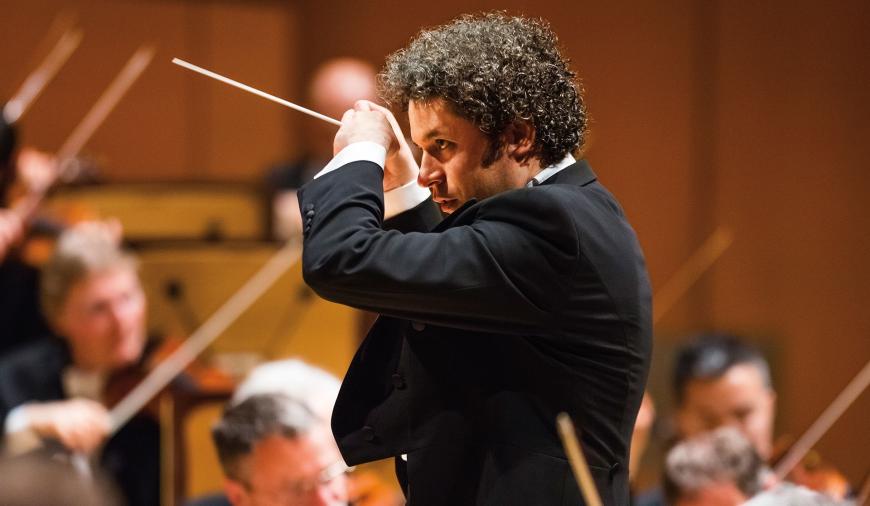
Two nights later at Disney Hall (Nov. 16), it was Dudamel and the Los Angeles Philharmonic’s turn, their third contribution to the festival, which went all-Latin American all the time. It was a concentrated push for a distinct identity — a festival within a festival, more of a showcase for the LA Phil’s Pan-American Music Initiative than a celebration of Californian diversity.
Yet here, the Latin slant produced a concert to remember. Fortunately, spot mics captured the program over four performances — and hopefully a recording will be available in physical and digital formats.
The piece de resistance was the world premiere of Revolución diamantina by Gabriela Ortiz, whose music has been played so much at the LA Phil that she’s a de facto composer-in-residence. Deservedly so, for Ortiz has come up with exciting, groove-driven material over the past few years — and she may have outdone herself with this often thrilling 45-minute ballet, unveiled here in a concert version.
The title means “glitter revolution,” and the catalyst was a recent series of feminist marches in Mexico City protesting the lack of accountability for the police officers who raped a woman (puffs of pink glitter were thrown at the city’s chief of police). There is a detailed scenario for the ballet, which has six acts and numerous scenes, but as in Stravinsky’s The Rite of Spring, you don’t need the storyline in order to get a big charge out of the music alone.
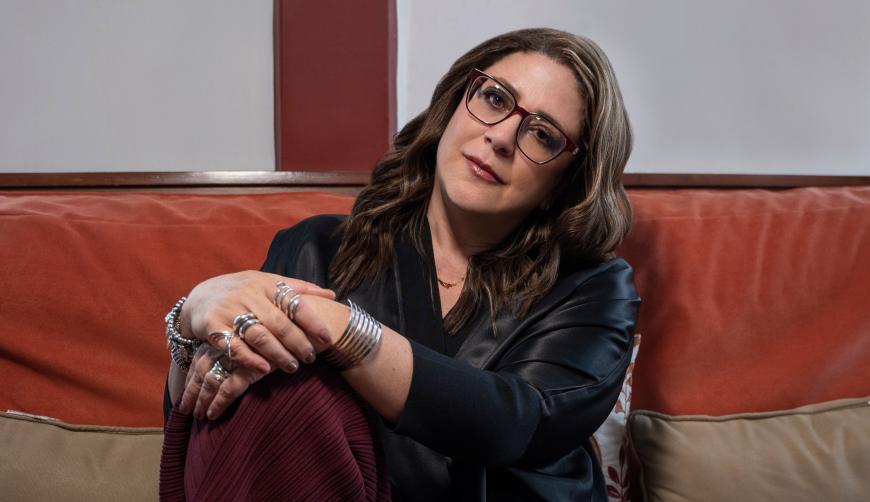
A huge orchestra, with several rows of percussion instruments, was on the expanded stage in Disney Hall. Eight female singers from the Los Angeles Master Chorale were placed at the rear of the stage, singing gently amplified wordless syllables in spots. A pretty, glistening introduction gives way to a vigorous toccata that generates a driving groove a la Steve Reich. A dreamy haze with mooning voices dissolves into spooky things that go bump in the night.
And speaking of Stravinsky, there are torrid episodes that uninhibitedly build upon the violence of the “Dance of the Earth” and “Glorification of the Chosen Victim” passages in The Rite, yet in Ortiz’s vernacular. If Stravinsky could steal from his predecessors to construct something new — which he did repeatedly — his successors can do so in his spirit.
Leading off the program was Astor Piazzolla’s Four Seasons of Buenos Aires, as arranged for string orchestra by Leonid Desyatnikov. Normally, I don’t respond to Piazzolla’s nuevo tango on grounds of too much sentimentality, but I do like this piece, especially when Desyatnikov’s brittle, rather freely adapted transcription slyly quotes and satirizes Antonio Vivaldi and even the Pachelbel’s Canon amid Piazzolla’s snapping strings and trademark glides. The Spanish violinist Leticia Moreno was the soloist, handling the slippery slides and other effects with determined flair.
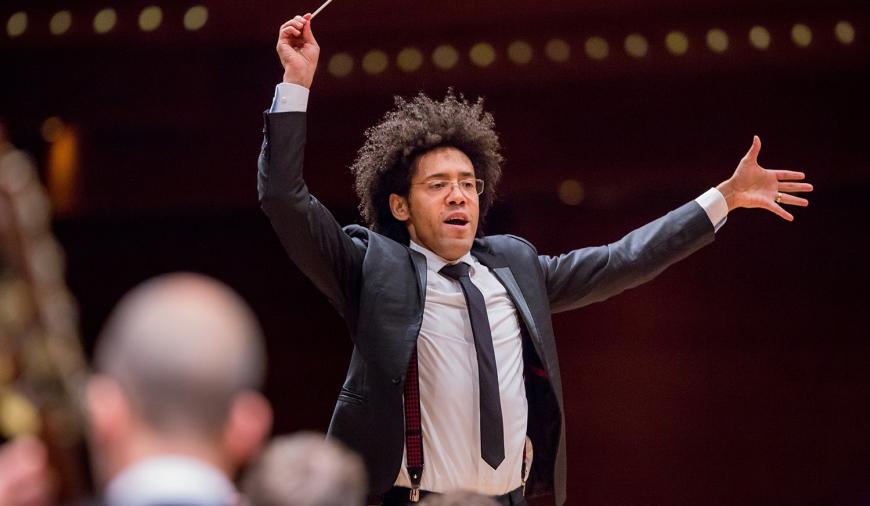
The following day (Nov. 17), I drove south to San Diego to see and hear what Payare and his ascending San Diego Symphony had up their sleeves. With the renovation of Copley Symphony Hall still not finished — as of this writing, the SDSO is saying by mid- to late spring 2024 — the orchestra has been performing in its new outdoor summer home, The Rady Shell at Jacobs Park by the bay, well into the winter season.
Wouldn’t you know it, it rained on this evening — in buckets an hour before the concert and on and off throughout the night. But the orchestra pulled off the performance anyway; The Shell’s crew did a laudable job of quickly drying the tables and chairs with squeegees whenever the showers interfered. Understandably, attendance looked sparse.
It turned out to be an enormously stimulating concert, consisting of exciting, difficult 20th-century music, plus a world premiere commissioned by the orchestra from Vladimir Tarnopolski, 68, a Ukrainian composer working in Russia who had the temerity to criticize Vladimir Putin’s invasion of his homeland and is now in exile in Germany. “This life is very bitter and very funny,” Tarnopolski said in a video shown before the performance, and his new Danse Macabre reflects that duality.
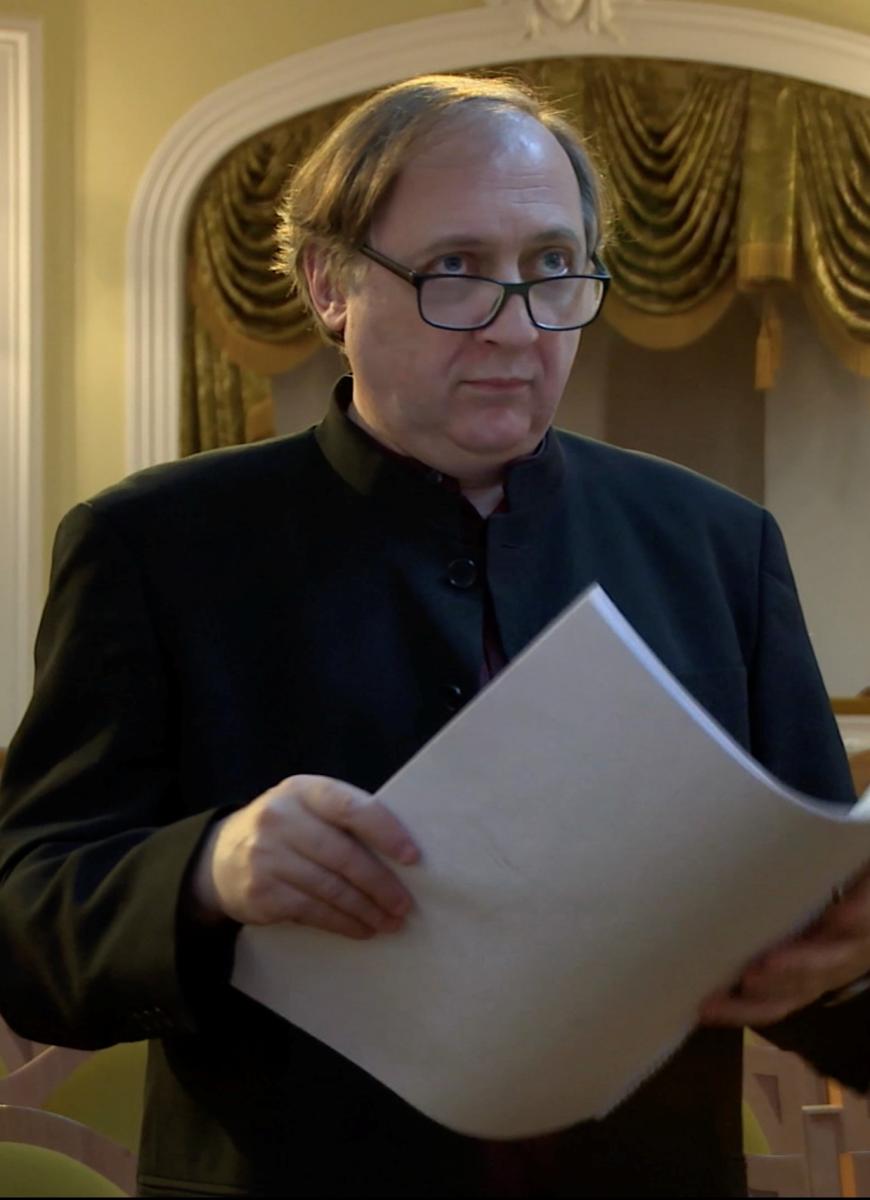
Tarnopolski starts off with a harsh paraphrase of the passacaglia theme from the fourth movement of Brahms’s Symphony No. 4 and then weaves in the good old “Dies irae” motive for a theme and variations that gets spiky and spare in its needling dissonances. Eventually, the piece develops gripping momentum, pounding away and dissipating in string plucking and death rattles. Tarnopolski intended the 15-minute work to be a protest against the Russian invasion of Ukraine, and with its combination of totentanz and bitter humor, it achieves its intention.
Payare got Béla Bartók’s The Miraculous Mandarin Suite off to a deliciously raucous start and kept the fire going with gusts of wildness, his arms swinging in big sweeping gestures. The highlight of the evening was a rare live performance of Heitor Villa-Lobos’s great Bachianas Brasileiras No. 7, the most stimulating and most Bach-drenched entry in the Brazilian composer’s cycle. This performance had vigor, drive, and pompous weight when needed, with a full blast of tam-tam at the end.
And as if in answer to Ortiz’s new work, Payare closed the concert with The Rite of Spring, eliciting maximum excitement via fast tempos and thunderous amplification of the drums, which nearly shook Jacobs Park’s grounds. To play a program like this outdoors, let alone prepare so much difficult music, was an act of boldness in itself, and the SDSO just managed to pull it off.
This adventure doesn’t begin to sum up the totality of the California Festival. But if I may simplify things, of the three orchestral concerts on this trip, I would bestow the imaginary awards of Best World Premiere to the LA Phil, Best Orchestral Performance to the SF Symphony, and Best Overall Programming to the San Diego Symphony. For what it’s worth, of course, because they were all good.


